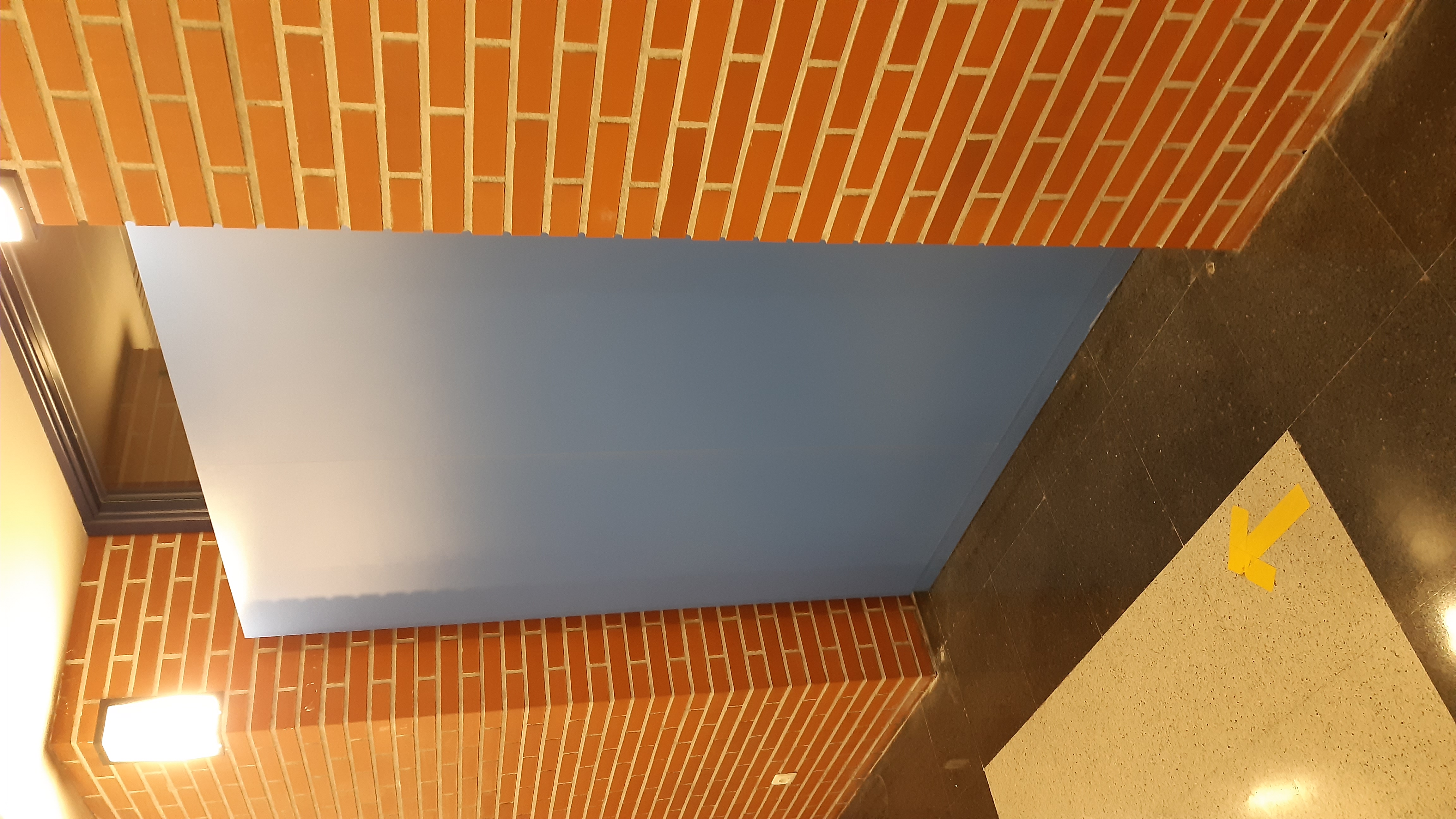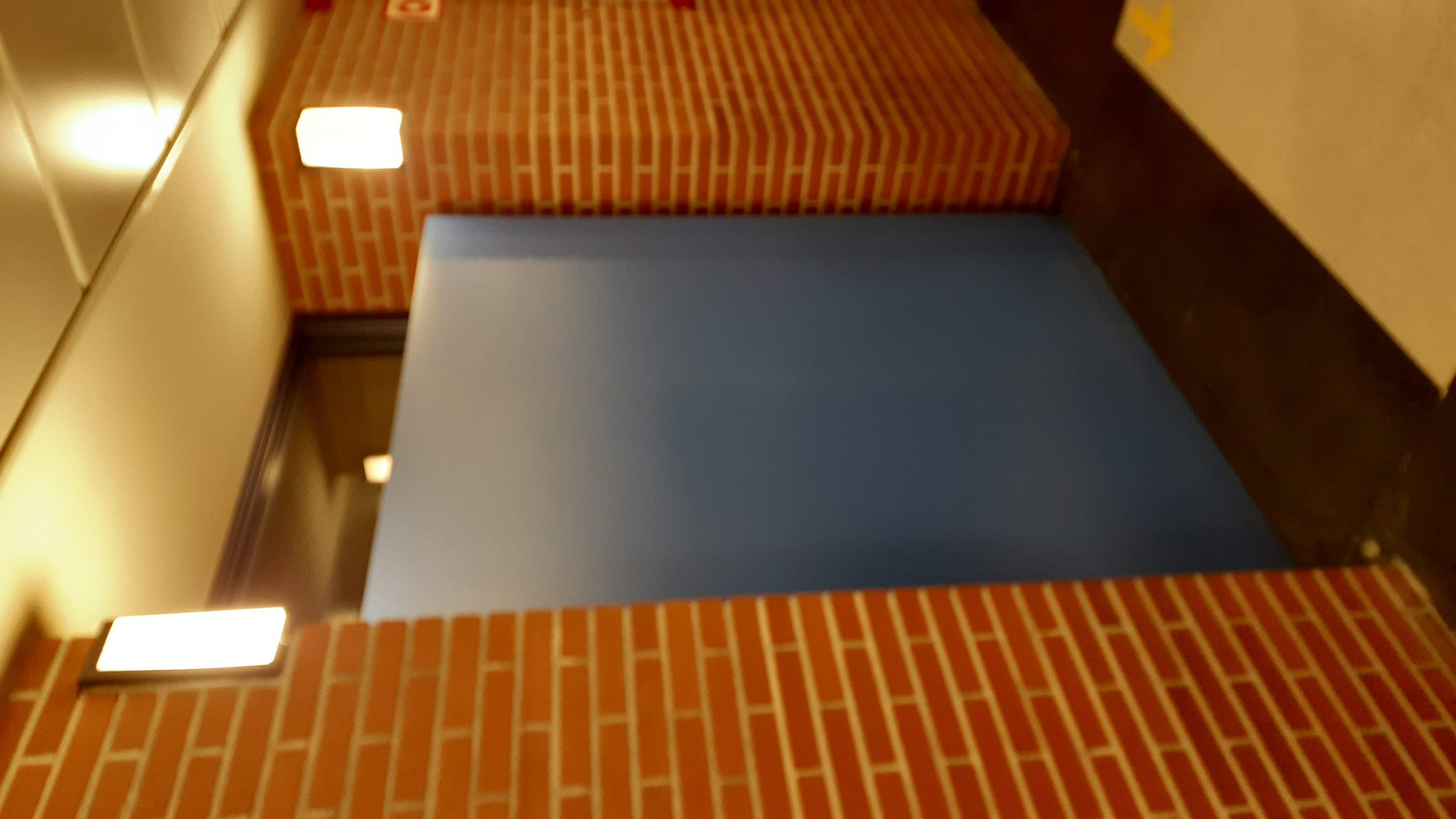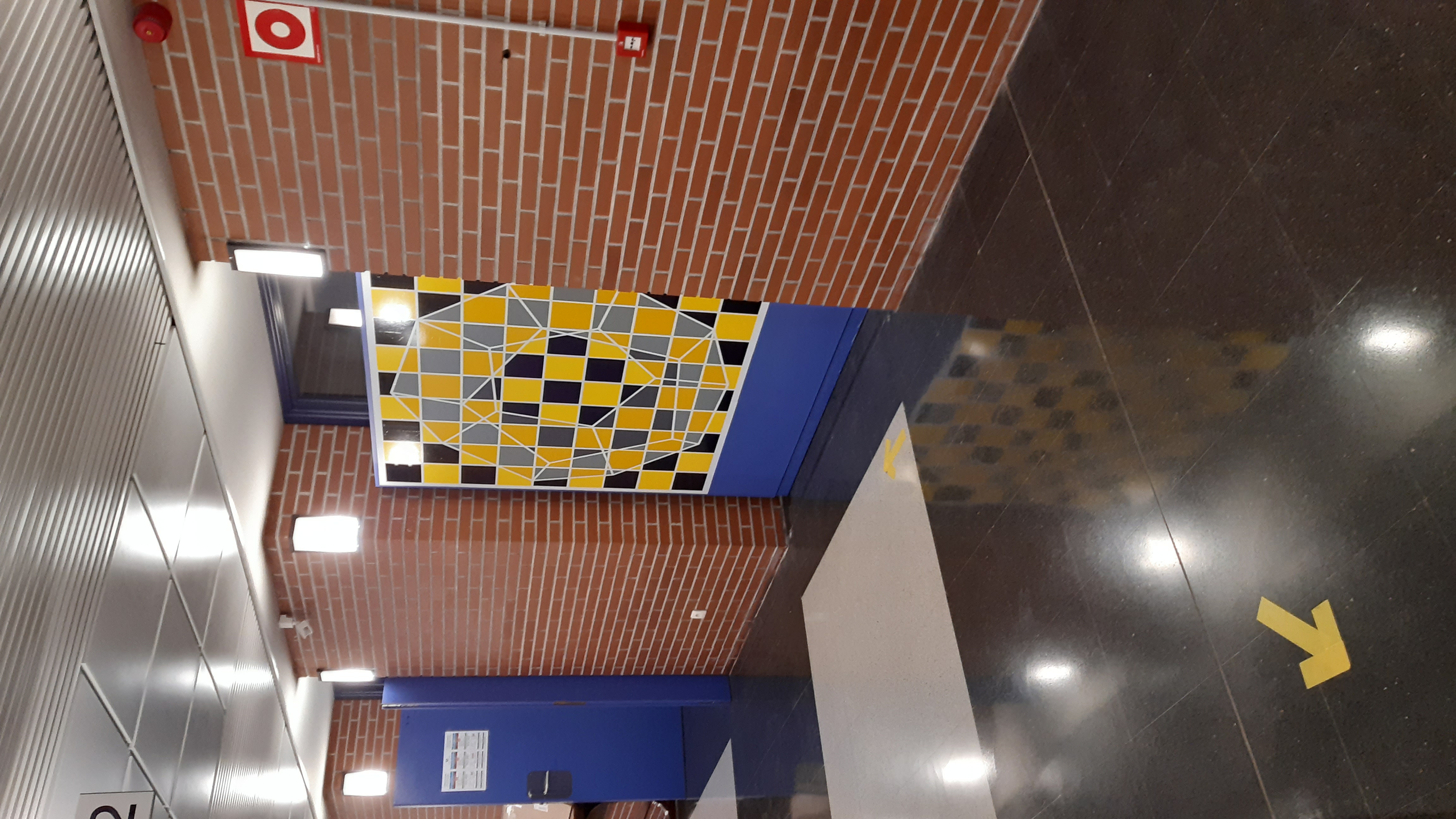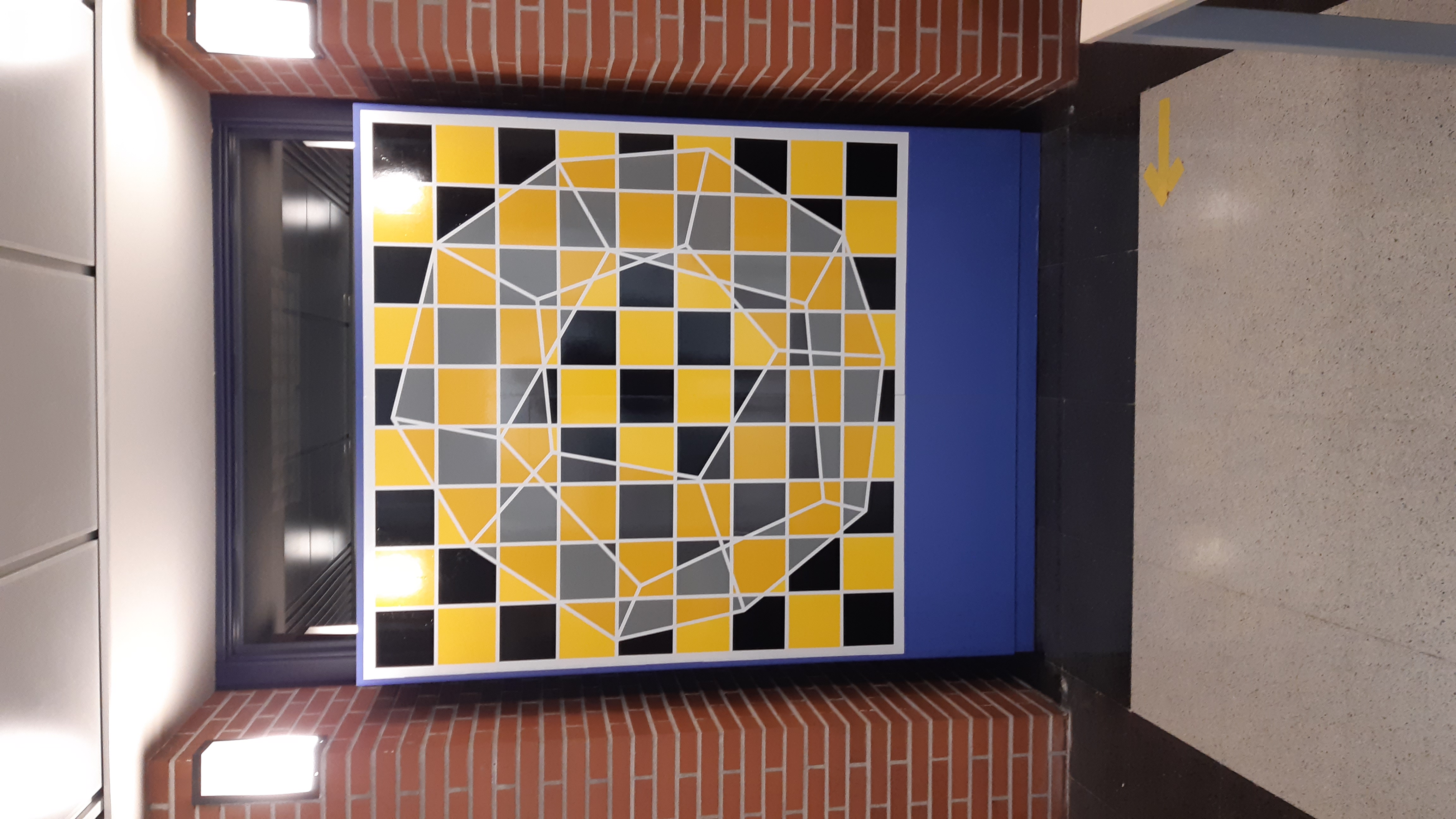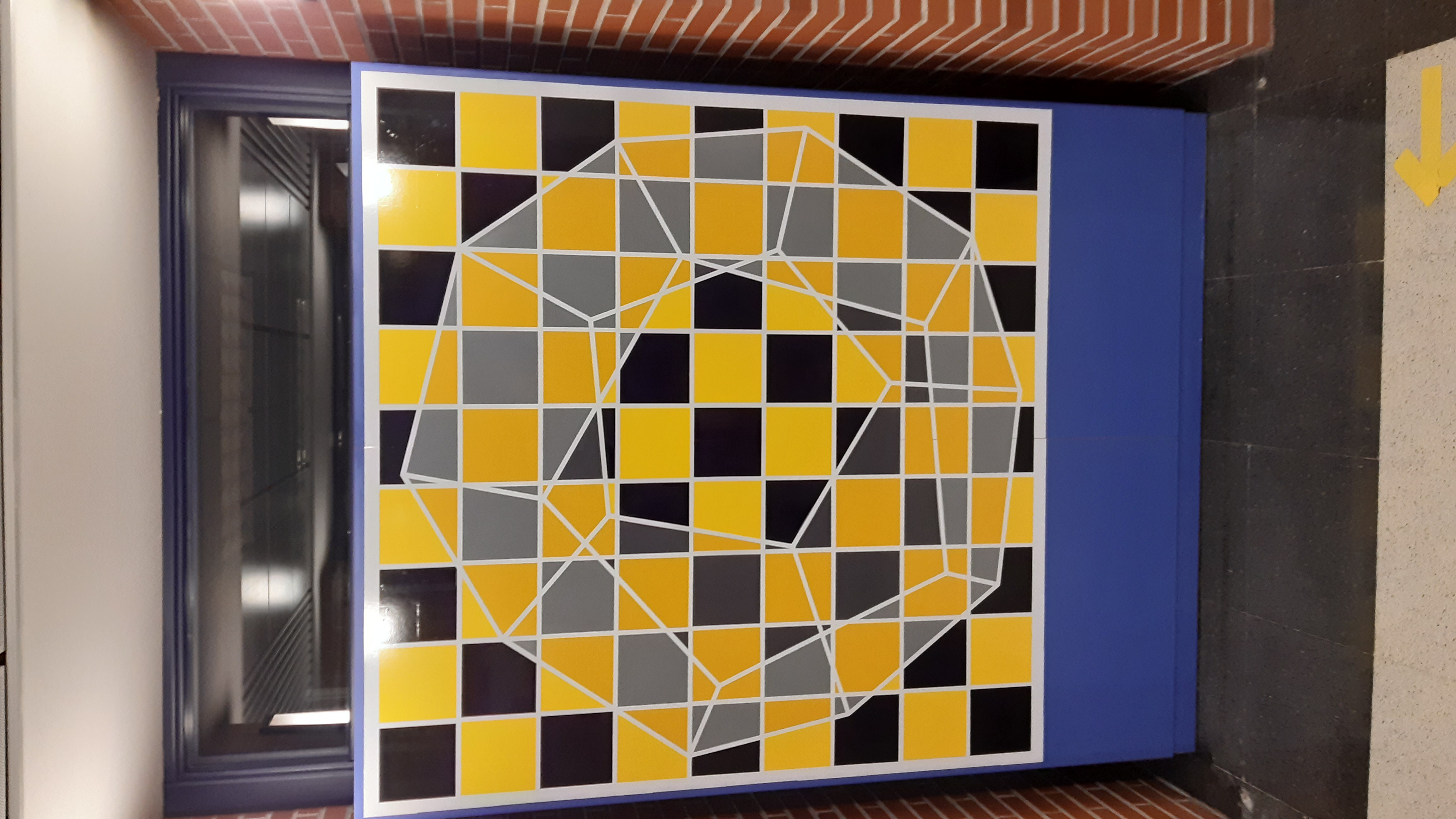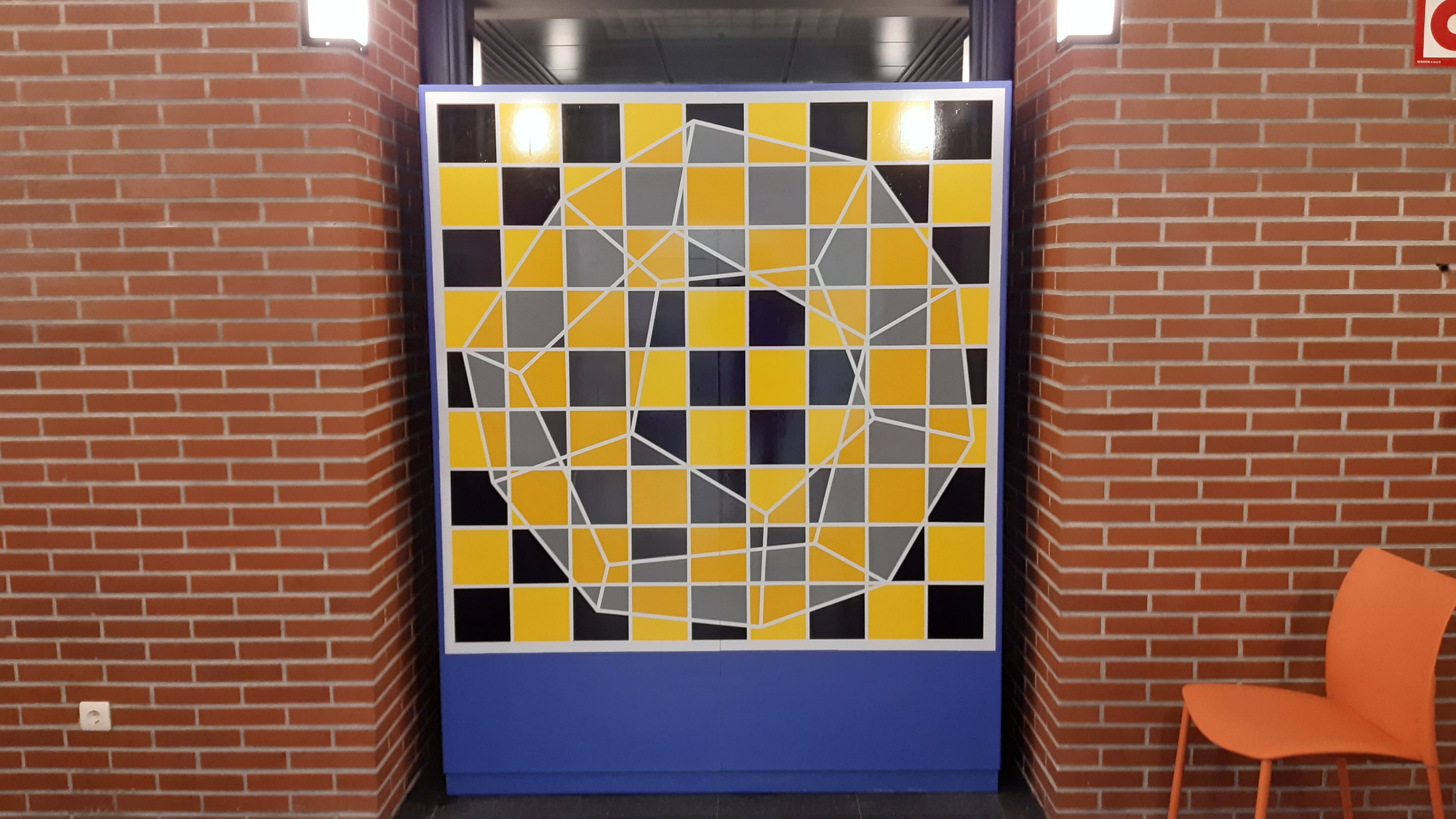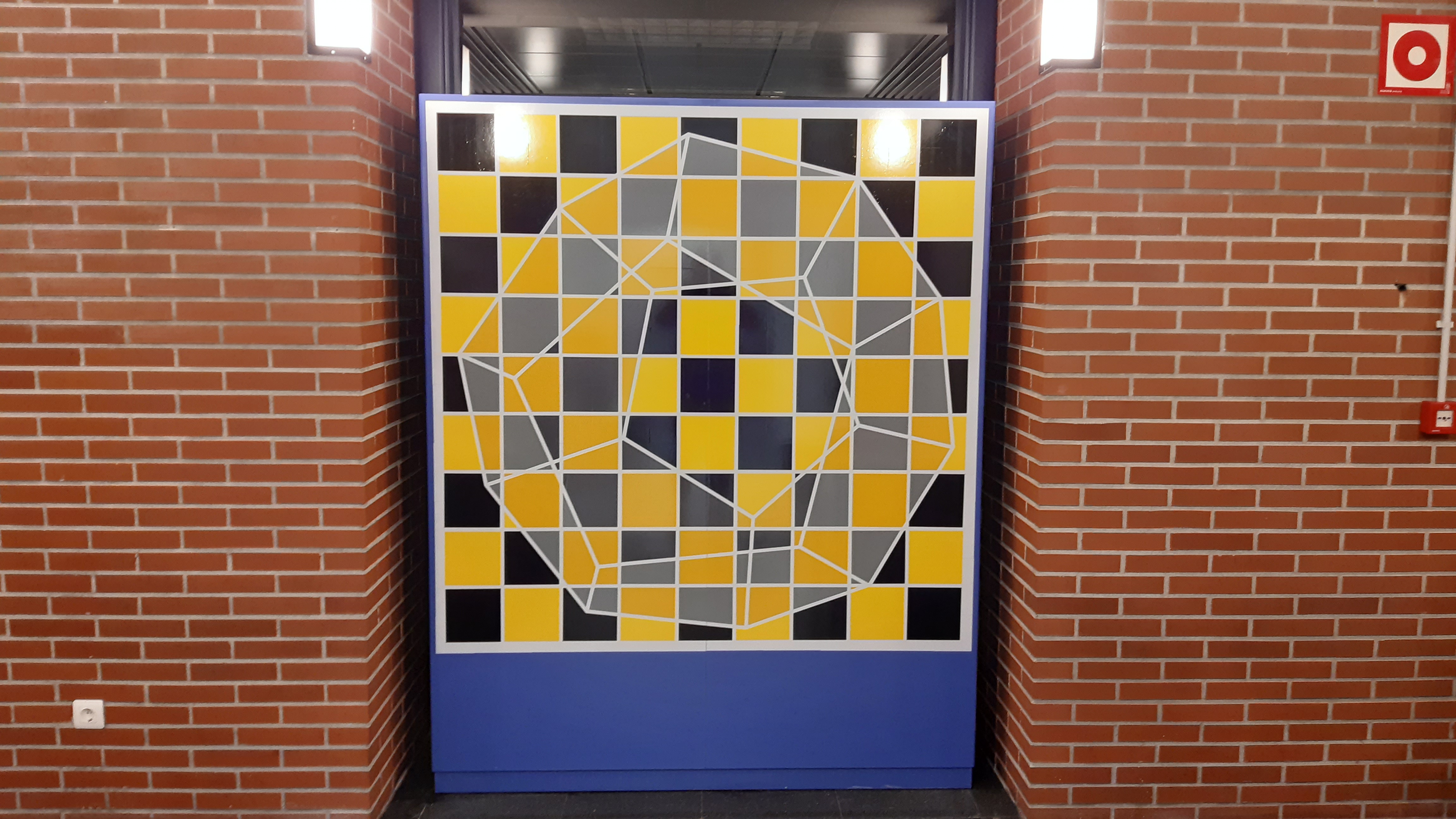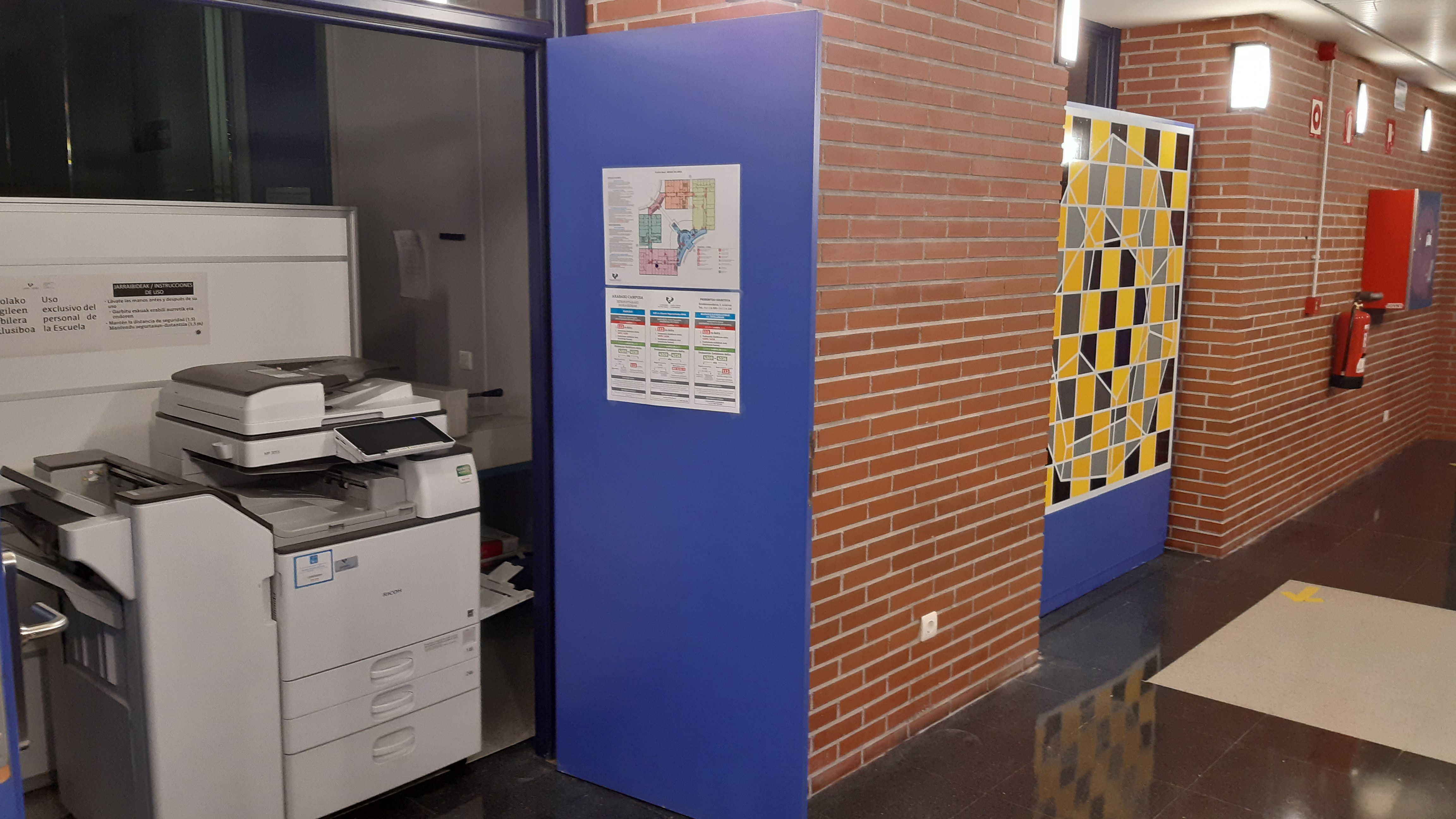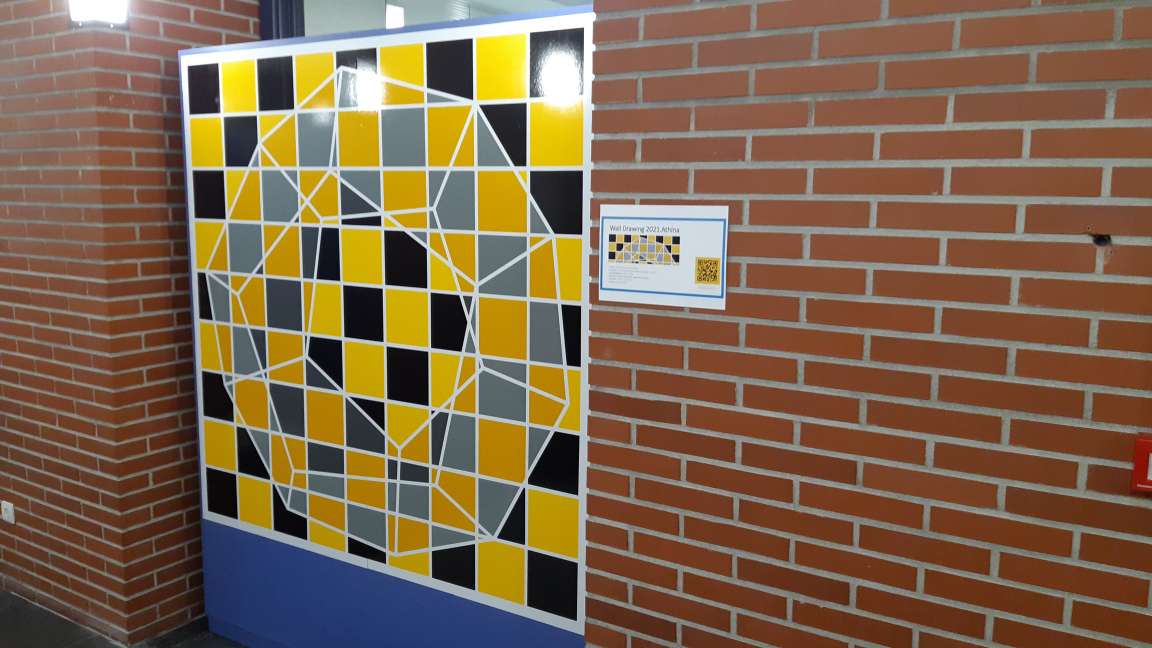Wall_Drawing_2021.Athína
Instalation

- Title: Wall_Drawing_2021.Athína
- Art and Project: Juan Carlos Olabe y Xabier Basogain - JC&X
- Collaborators: M.A. Olabe
- Technique: Matte vinyl on wood panel
- Size: 158 cm x 158 cm
- Date: October 2021
- Place: corridor on the ground floor, next to the meeting room 2, and photocopier
Motivation.- This work represents a dodecahedron, the most complex of the indivisible Platonic solids. The Platonic solids were discovered more than 2000 years ago. They are regular convex polyhedra and there are only 5. In school education they are briefly mentioned but are not part of the citizen's knowledge. If there were any inhabited planet in any galaxy of the universe, it is certain that they would have works of art, but not exactly the same as the pyramids of Egypt or the mosque of Córdoba. However, if they would have the exact same 5 platonic solids. Therefore, we can say that the dodecahedron is not only a world heritage site but a universal heritage.
In our minds we have representations of the physical world around us. We distinguish a horse from a tree. Some distinguish horses from mules, and elms from firs. The representation in our minds of the geometric world that this universe has provided us is part of our culture.
Challenge of three-dimensional geometry.- One of the reasons why we lack a basic knowledge of these geometric structures is the lack of mental languages for their representation. There are abstract mathematical languages, but these are limited to the knowledge of experts. There are initiatives such as the IOC and Crown languages (see the IOC and Crown link) so that the student and the citizen can represent these structures in their minds. These initiatives use the human cognitive primitives of the vision system.
Athína.- Wall Drawing 2021.Athína is a work in which we experiment with three artistic paradigms. The first offers the viewer an introduction to the concepts of initiatives such as the IOC and Crown languages. Recognize that a three-dimensional object is only partially visible to the viewer. That is why he divides the dodecahedron into three types of faces. Those that are visible, those that are hidden and those that we have emptied to improve our perception of the object. Visible faces are recognized by a light gray color, caused by light reflection. The hidden ones, internal to the dodecahedron, are recognized by a darker gray color, caused by the lack of light in the cave in which they are found. And the hollowed out faces are recognized because they allow us to see the checkered background without obstruction.
Additional knowledge allows us to associate the visible faces with a pentagonal crown and the hidden faces with another pentagonal crown. The bases of these crowns are the cast faces. This work contains a white background on which yellow (two-tone) polygons and gray (three-tone) polygons are inserted. The 20 vertices and 30 edges of the dodecahedron are not explicitly represented, but arise unambiguously from the negative space created by the yellow and gray irregular polygons.
The second artistic paradigm is the appreciation of a work of art at two levels, the local and the global. In this work, at the local or micro level, there are experiences of color contrasts and basic geometric shapes (irregular polygons and empty spaces). At a global or macro level, there are experiences of structures (vertices, edges, hidden faces, visible faces, exterior and interior of a solid, checkered background wall, floating object, specular reflection of light, crystalline refraction of light) and the chromatic and geometric relationship between them. Color patterns are seen that identify the different structural elements of the work. In the macro view, the viewer unifies sets of irregular polygons in an automatic, inevitable, effortless, and unambiguous geometric way. Local and global experiences are of a completely different cognitive and aesthetic nature.
The third paradigm experiments with the differential and integral essence of the geometric structures of the physical world that surrounds us. In a process of discretization, the three-dimensional structure of the dodecahedron is decomposed into 81 primitive elements (81 tiles or tesserae). In the integration process, a discrete set of primitive elements (5-tone irregular polygons) combine to form a superior structure (a three-dimensional body with 12 faces, 20 vertices and 30 edges). This artistic experience conveys to the viewer a fundamental idea that they will never forget: everything is a set of parts, and a set of parts make up a whole.
Complete Turing.- This work uses a minimal language of colors. The purpose of looking for a minimal language is to find the most distant boundary that still allows the representation of a three-dimensional object on a two-dimensional plane with precision and without ambiguity. A minimal language allows the viewer to recognize all its primitive components (5 shades) and explore how the combination of these two yellow tones and three gray tones is capable of expressing superior geometric concepts.
The dodecahedron is one of the 5 Platonic solids. Furthermore, with less restrictive symmetric demands, we find the 13 Archimedean solids and the 92 Johnson solids. The geometric language presented in this work and based on 5 tones has the ability to represent all these polyhedra and any other yet to be discovered. The language designed for this work is a complete Turing machine.
Creation of artistic languages.- One of the objectives of this work is to illustrate the creation of new languages of geometric representation that inspire the viewer to create their own languages of artistic expression. The apparent paradox that a language as simple as that of this work allows the representation of an infinity of geometric objects encourages the viewer to search for other alternatives, knowing their great potential.
Democratization of art.- The use of a humble element such as vinyl allows this type of experimentation to any participant without financial risks or lack of infrastructure. This allows students in any school to make their own works of art without depending on special budgets.
Architectural expansion.- If we transform the humble element of vinyl for a more noble one, such as metal, wood, glass or ceramic, capable of surviving atmospheric, cleaning, structural and other demands, we can also imagine the urban potential and architectural design of this type of artistic works.





